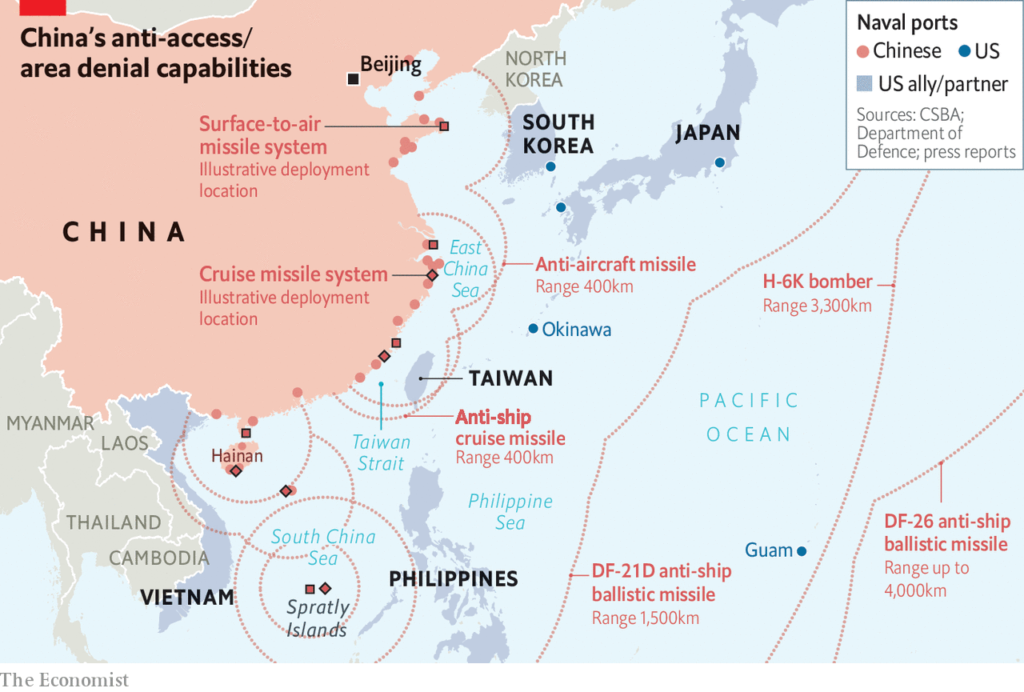[Analytics] Taiwan can’t gamble on cross-Straits crisis: Global Times

(The Economist)
Taiwan authorities claimed that People’s Liberation Army (PLA) fighter jets crossed the so-called “middle line” of the Taiwan Straits at Sunday noon. Will the Straits situation reach a new stage? Possibly, but not necessarily, Global Times reported.
First, the “middle line” is fictitious and psychological comfort to the Taiwan authorities. The Chinese mainland has never recognized it. Moreover, the two sides across the Straits probably have different definitions of the “middle line.” Hence, even if PLA fighter jets did cross it, how the situation develops depends on Taiwan and US reactions.
Washington has gone too far by sending warships to sail through the Straits thrice this year. Many people tended to think the PLA’s move was a response to recent provocations by Taiwan and the US. If they restrain themselves, the crossing of PLA fighter jets over the “middle line” will be nothing serious. However, if the two continue to make provocative moves, the cross-Straits situation is bound to become more uncertain.
The cross-Straits situation is complicated as three sides are involved, while the main players of the game are two of them – Beijing and Washington.
Taiwan’s real interest is long-term peace, which is always marginalized by the politics in the island. Some politicians in Taiwan prefer to put forward extreme policies to rival the mainland. The preconditions for such measures are peace where wars will not really break out.
Taiwan authorities make people believe they fear nothing, but in fact, the island cannot withstand the cross-Straits situation going toward deep turmoil.
China and the US are big countries who can afford military frictions in certain areas. But for the island, it won’t be that simple.
If the fighter jets of the PLA and the US Air Force have an encounter in the skies over Taiwan, it will have a strong psychological impact on Taiwan people. The mainland could also retaliate against US moves in the region.
Recently, Chinese mainland scholars have been engaged in a broader discussion on how to cope with the growing provocations from the island and the US. More and more people suggest PLA fighter jets fly over the island.
As cross-Straits military tensions intensify, the probability of occasional military frictions or limited military conflicts will rise. It’s possible that the fighter jet will be shot down in a military clash, or PLA conducts targeted elimination at certain military base on the island that could threaten the mainland.
Does this mean China is about to resolve the Taiwan question using military means? Not necessarily. A peaceful reunification is the mainland’s basic policy toward the island. But it doesn’t mean giving up using military forces.
We don’t need a real war to resolve the Taiwan question. The mainland can adopt various measures to make Taiwan ruled by the Democratic Progressive Party (DPP) turn into a Lebanon situation, which “Taiwan independence” forces cannot afford.
If Washington sends wrong signals that lead to continuously escalating tensions in the region, it would be a nightmare for Taiwan authorities. If the DPP puts the island in the middle of a high-level military storm, can it sustain the rule?
Once the cross-Straits crisis gets out of control, the Chinese mainland is capable of fighting to the end, while both the island and the US have something to worry about. The DPP fears that it would lose its power. Washington doesn’t want to be involved in another major war and is also concerned that Taiwan people will no longer accept its support.
Taiwan and the US must restrain themselves as the cross-Straits crisis has already turned into a gamble they cannot afford.